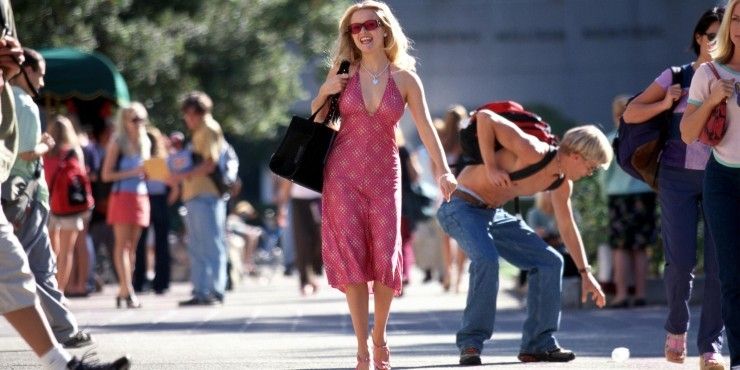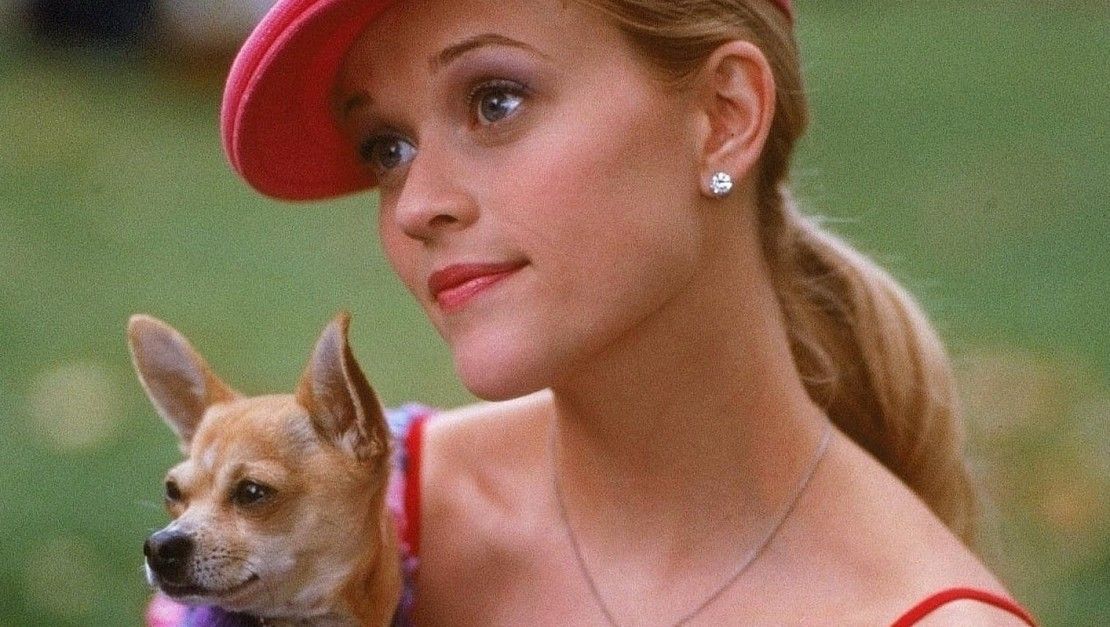
Blondes do have more fun.
Elle Woods is one of the greatest characters ever written. She's right up there with Charles Foster Kane and Michael Corleone. I mean that. I think the movie, Legally Blonde, is one of the most important films of the 20th century. It subverted expectations, refreshed the tired lawyer movie subgenre, and crushed at the box office.
Aside from all that, it's just a movie that's so fun and refreshing to watch. Its comedy is layered, its cinematography is inventive, and don't get me started on the costume design.
The movie was directed by Robert Luketic in his feature-length directorial debut—what a feat! The script, which is one of the best ever, was written by Karen McCullah Lutz and Kirsten Smith. It was adapted from Amanda Brown's 2001 novel of the same name. The movie stars Reese Witherspoon, Luke Wilson, Selma Blair, Matthew Davis, Victor Garber, and Jennifer Coolidge. All at the top of their game.
There are eight lessons we can learn from this movie. Let's dive right in.
8 Great Filmmaking Lessons from Legally Blonde
1. Cast the Perfect Lead
In 2001, Reese Witherspoon was fresh off the indie comedy Election and the much-about-talked studio drama, Cruel Intentions. While we knew she could act, I'm not sure anyone had seen her become a character before.
Election was a tour-de-force, but I'm not sure you could have predicted Tracey Flick could lose that sense of anger underneath and become someone bubbly like Elle Woods. But her gravitas is what won her the role.
Elle is given the task of carrying the movie's big heart and setting the tone. You have to buy who plays her because you also have to buy what's happening around her. And this movie nailed it by taking a chance on Witherspoon, whose meteoric rise to stardom after was warranted and deserved.
Spend time casting. Go with your gut, and if you know who should be in the movie by page five, trust your instincts.

2. Lampoon Tropes
One of the reasons this movie was such a hit is that it completely blew the blonde bimbo out of the water and hit us with a fully developed character who had wants, desires, and dreams. It's okay that the character is a "girly" protagonist who likes manicures, fashion, and pink. Those passions become her strengths.
We were used to these types playing the sexpot, but here we see her take those expectations and flip them on their heads. She kills it in the courtroom and wins over the audience—plus, she doesn't settle for the guy she chased. She actually is allowed to arc into more.
What tropes in your story can you flip around and surprise the audience?
Read and download the Legally Blonde screenplay here!

3. Humiliate Your Protagonist
Maybe the best scene in the movie is when Elle shows up at the house party in costume, and gets humiliated in front of everyone. It's a giant turning point in the movie. We already liked her, but her reaction here to better herself and take no prisoners is what makes us love her.
If you want to get the audience cheering for you, make life hard on your protagonist. That way, when they win, we feel like we are winning along with them.
4. No Small Parts
Is there anyone in a small role funnier than Jennifer Coolidge in this movie? She plays a divorcee who needs to get her mojo back. Her success is tied to Elle gaining confidence as a law student as well.
Another person stealing scenes is Ali Larter, who plays an overzealous trainer accused of murder.
There are no small parts. Write your minor characters with hopes, dreams, and ideas. Remember, they are the stars of their own movie, even if that movie is not your movie. You can get bigger actors for those roles too.
5. Costuming Matters
I wanted to take a beat and talk about how the costuming in this movie really sets the tone. We see Elle's wardrobe grow up over the course of the movie, but also stay true to herself. She starts in sweatpants and tee shirts and eventually is in a suit working on a murder defense. The professors are in tweed, her stuffy classmates are buttoned up, and as the movie progresses, the wardrobe changes with the story. It's really a delight and an added layer.

6. Earn the Audience
Modern audiences are so smart. We have been watching movies for over a century, and with all the TV we consume, we see twists coming left and right. If you want to earn the audience, it's not just about having funny jokes, but surprising them at every turn.
The surprises in this movie are not lazy. No one phones it in because it's a comedy—they take the court beats very seriously, with comedy couched in scenes to keep it lively.
Elle does real legwork to clear her client, and we totally buy why she's cagey with the facts.
If your movie believes in itself, so will the audience.

7. Go Full Circle
The opening of Legally Blonde begins with Elle being rejected and dumped. We think her character arc is going to be getting the guy back, but what it evolves into is a movie about her believing she deserves more and is worth more to the world.
As the movie ends, we see her not reject love but embrace someone who loves her for her brain and gumption, but not be defined by marrying him. We also see Elle standing before her classmates having earned everything coming to her.
That brings our story full circle. Elle has totally arced, and all of the audience's expectations have been met.
How can you show us how far your characters have come since the beginning of the script? How can you satisfy what the audience wants out of the movie?
8. Bend and Snap
The most iconic scene in this movie is the bend and snap. It's not just a tool to get a person's attention, but a metaphor for finding your inner confidence. It's the theme of the movie. But it also wasn't in the book. There was a dance scene in the book that they just couldn't get into the movie. It didn't match the tone they wanted.
The whole team was worried. They knew they needed a scene to mark Elle's confidence and hit that theme home. They also wanted to use Coolidge, an amazing actress who needed more of a B-story.
Writer McCullah Lutz told Entertainment Weekly, "At first we were like, 'Should the store be robbed?'"
Co-writer Kirsten Smith said, "I think we spent a week or two trying to figure out what the B plot and this big set-piece should be. There were crime plots. We were pitching scene after scene, and it all felt very tonally weird."
After hours of brainstorming, Lutz came up with a solution: "What if Elle shows [Paulette] a move so she can get the UPS guy?"
Smith said, "It was a spontaneous invention. It was a completely drunken moment in a bar."
It became an iconic movie moment that will live forever. Even after every role in her career, Witherspoon says, "That is still the most asked request I get from people. Even this past year, when I have been giving speeches or talking about whatever, they always ask me, 'Will you do the bend and snap?' I have a feeling I will be doing the bend and snap until I am 95."
Be okay improvising and changing things that don't work. Always service your story and the characters. When all else fails, go to a bar, brainstorm, and see what happens. The best ideas can come out of thin air.
What's next? Get our free screenwriting eBook!
So much of what we're talking about on No Film School when it comes to screenwriting is summarized in our new eBook. It also helps guide you through a 10-week writing plan that will get your script actually finished.
Your Comment